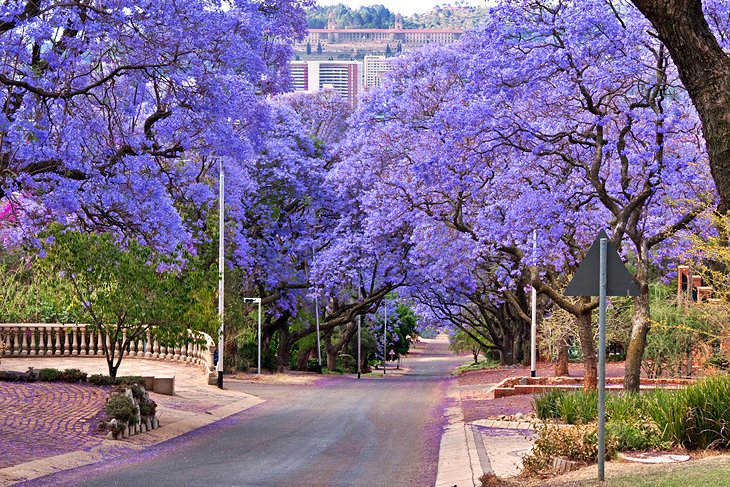Johannesburg North Attractions for Dummies
Table of ContentsA Biased View of Johannesburg North AttractionsThe Greatest Guide To Johannesburg North Attractions8 Simple Techniques For Johannesburg North AttractionsWhat Does Johannesburg North Attractions Do?See This Report on Johannesburg North AttractionsSome Known Details About Johannesburg North Attractions
The city owes its area to the existence of a a lot more precious source: gold. The city grew on the edge of the Witwatersrand Key Reef, a below ground stratum of gold-bearing quartz-silica empire that arcs for numerous miles below the Highveld. A lot of the gold mines in the city ceased operation in the 1970s, however in its day the Witwatersrand gold market represented even more than 40 percent of the world's annual gold manufacturing.Johannesburg has a temperate environment. Summer season temperature levels balance regarding 75 F (24 C); winter months temperatures balance concerning 55 F (13 C) and only periodically dip below cold. The city delights in concerning 8 hours of sunshine daily in both winter months and summer season. Rain averages about 28 inches (700 millimetres) per annum, but the total differs significantly from year to year.
What rainfall the city gets falls practically exclusively in the summertime, usually in magnificent late-afternoon electrical tornados. Air contamination positions a substantial problem, especially in the cold weather, when thermal inversions hamper the westward circulation of air from the Indian Ocean. Contamination is most extreme in the densely settled Black towns on the city's periphery, where lots of locals still depend on coal for fuel.

The Ultimate Guide To Johannesburg North Attractions
The equilibrium of the city is occupied by whites. Holiday accommodation differs in character and top quality.
Physical development, although somewhat limited by transport, continued promptly as immigration to South Africa, and Johannesburg in certain, boosted significantly.
A lot of poor suburban areas were blended, with poor blacks and whites living together, although the well-off suburban areas were normally scheduled for whites.
The previous system of eleven phoned number areas was reorganised in 2006. Marshalltown, as seen from the top of the Carlton Centre. The M1 and M2 run behind the structures, and the southerly residential areas expand past the highway limit. The central city of Johannesburg lies within the city's Region F. The estimated population of the area is 200,000, [] yet the number of people staying in the central city on an informal basis is unknown, as many are illegal aliens. Many higher-income citizens and white people have relocated to the north residential areas and have been changed by lower-income black people. The joblessness, education and learning, and age profiles of the area are all unidentified, due to the difficulty of acquiring trustworthy details regarding the location.
The Johannesburg North Attractions Statements
Centred on the CBD, the region includes the suburbs of Yeoville, Bellevue, Troyeville, Jeppestown, and Berea to the eastern. To the west it spreads out to Pageview (Johannesburg North attractions) and Fordsburg. There are small industrial parks to the south, such as City West-Denver and Benrose. Around 800,000 commuters pass through the central city each this link day, and it works as a local buying node for visitors from the southern suburban areas. Yeoville and Bellevue have a mix of apartment and single household systems on tiny lots. The area is located on a mountainous divide that runs from eastern to west. One of the most noticeable geographical feature is Observatory Ridge, which is named for the big observatory situated on it. The recreational areas are no more utilized, due to safety and security issues.

More About Johannesburg North Attractions
R. Tambo International Airport Terminal). The eastern residential areas are browse around this site some of the oldest locations of Johannesburg, there are big communities of Jewish and various other European histories, most of the populace is English speaking. There are 3 fairway as well as a number of safeguarded ridges with viewsites. There are several well-developed and up-market entertainment and shopping locations in the east such as the Eastgate Shopping Centre and the Greenstone shopping centre.
The area is mainly made up of old "matchbox" residences, or four-room residences constructed by the government, that were developed to give inexpensive lodging for black workers during racism. Soweto is an acronym, representing "South Western Townships". Street after road in this field is lined with matchboxes; however, there are a couple of smaller locations where thriving Sowetans have actually developed homes that are much more comparable in stature with those in even more affluent residential areas.
Hostels are another famous physical function of Soweto. Initially built to house male migrant workers, many have actually been enhanced as houses for couples and families. The N1 Western Bypass skirts the eastern limit of Soweto. The residential area was not traditionally permitted to create work centres within the location, so mostly all of its locals are commuters to various other components of the city.
Things about Johannesburg North Attractions
The household locations in the north suburban you can check here areas are mostly formal, with no substantial areas of informal housing, or real estate that lacks a long-term framework. This is a recognized area, there is a fad of land use modification from household to business, particularly along major arterial roads and around well established nodes.
The area is well connected to road networks, specifically along the north-south axis formed by the M1 and N1. Roadways to the east and west are much less well established, as there are no highways travelling because instructions. Towards the northern border of the city, the thickness of development reduces, leaving huge areas of primitive land around Midrand.
The Single Strategy To Use For Johannesburg North Attractions
, which is located on a hill ignoring the internal city and Hillbrow.